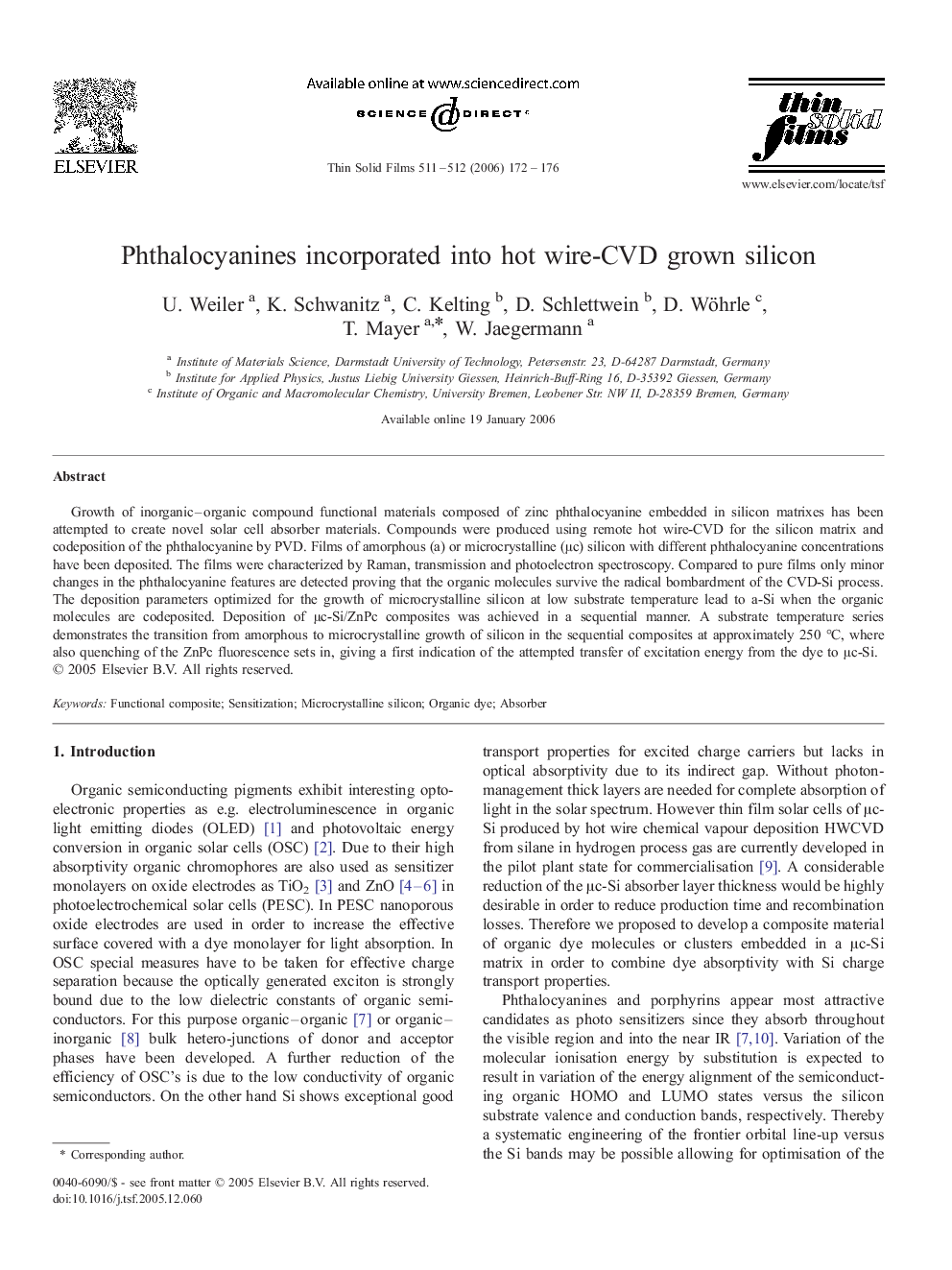| Article ID | Journal | Published Year | Pages | File Type |
|---|---|---|---|---|
| 1673299 | Thin Solid Films | 2006 | 5 Pages |
Abstract
Growth of inorganic-organic compound functional materials composed of zinc phthalocyanine embedded in silicon matrixes has been attempted to create novel solar cell absorber materials. Compounds were produced using remote hot wire-CVD for the silicon matrix and codeposition of the phthalocyanine by PVD. Films of amorphous (a) or microcrystalline (μc) silicon with different phthalocyanine concentrations have been deposited. The films were characterized by Raman, transmission and photoelectron spectroscopy. Compared to pure films only minor changes in the phthalocyanine features are detected proving that the organic molecules survive the radical bombardment of the CVD-Si process. The deposition parameters optimized for the growth of microcrystalline silicon at low substrate temperature lead to a-Si when the organic molecules are codeposited. Deposition of μc-Si/ZnPc composites was achieved in a sequential manner. A substrate temperature series demonstrates the transition from amorphous to microcrystalline growth of silicon in the sequential composites at approximately 250 °C, where also quenching of the ZnPc fluorescence sets in, giving a first indication of the attempted transfer of excitation energy from the dye to μc-Si.
Related Topics
Physical Sciences and Engineering
Materials Science
Nanotechnology
Authors
U. Weiler, K. Schwanitz, C. Kelting, D. Schlettwein, D. Wöhrle, T. Mayer, W. Jaegermann,
